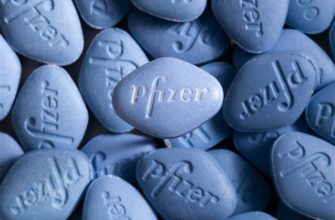Consider exploring the potential benefits of Flibanserin, a medication approved by the FDA to treat Hypoactive Sexual Desire Disorder (HSDD) in premenopausal women. It works differently than Viagra, targeting brain neurotransmitters rather than blood flow.
Unlike other treatments, Flibanserin requires daily use for consistent results. Studies show increased sexual desire in a significant portion of women who use it, though not everyone experiences the same level of improvement. Open communication with your doctor is vital to discuss potential side effects, such as nausea, dizziness, and drowsiness, and to determine if Flibanserin is right for you.
Important Note: Flibanserin is not a “female Viagra.” It addresses a specific hormonal imbalance linked to low libido, not general erectile dysfunction. Consult your healthcare provider for a thorough evaluation and to explore all available treatment options for addressing your specific concerns related to sexual health.
Remember to discuss your medical history and current medications with your doctor before starting any new treatment. They can help you weigh the benefits and risks and guide you towards a personalized approach.
- New Viagra for Women: A Detailed Overview
- Understanding Female Sexual Dysfunction (FSD) and its Treatments
- Identifying FSD
- Treatment Options
- Seeking Professional Help
- Further Research
- The Science Behind the New Female Viagra: Mechanism of Action and Efficacy
- Potential Side Effects and Drug Interactions of the New Female Viagra
- Access and Affordability: Getting the New Female Viagra
New Viagra for Women: A Detailed Overview
Current research focuses primarily on two distinct approaches: enhancing blood flow to the genitals and addressing hormonal imbalances contributing to low libido.
Flibanserin (Addyi) is a non-hormonal medication affecting brain neurotransmitters, improving sexual desire in some premenopausal women with hypoactive sexual desire disorder (HSDD). However, it requires a prescription and carries potential side effects like dizziness and nausea. Consult your doctor to determine if it’s right for you.
Alternative therapies, including testosterone supplements for women with low levels, are being investigated. These options require careful monitoring due to potential side effects. Always discuss these treatment options with your healthcare provider.
Lifestyle adjustments offer valuable support. Regular exercise, a balanced diet, and stress management techniques positively influence sexual health. Consider incorporating these into your routine.
Clinical trials are ongoing, exploring new compounds and combination therapies. These advancements promise improved options for women experiencing sexual dysfunction.
| Treatment | Mechanism | Potential Side Effects |
|---|---|---|
| Flibanserin (Addyi) | Affects brain neurotransmitters | Dizziness, nausea |
| Testosterone Supplements (if deficient) | Hormone replacement | Acne, hair growth, changes in menstrual cycle |
| Lifestyle Changes | Improved overall health | Generally minimal, but individual results may vary |
Remember, open communication with your doctor is crucial for determining the best course of treatment for your individual needs. They can assess your medical history and help you make informed decisions.
Understanding Female Sexual Dysfunction (FSD) and its Treatments
Female sexual dysfunction (FSD) encompasses various conditions hindering sexual response or satisfaction. These range from low desire to painful intercourse.
Identifying FSD
Diagnosing FSD requires a frank discussion with your doctor, detailing your symptoms and medical history. They’ll consider factors like age, relationship dynamics, and overall health. Physical exams and potentially blood tests may be conducted to rule out underlying medical conditions.
- Low sexual desire: Reduced interest in sex or fantasies.
- Arousal disorder: Difficulty achieving or maintaining arousal.
- Orgasmic disorder: Difficulty reaching orgasm or experiencing diminished intensity.
- Painful intercourse (dyspareunia): Physical discomfort during sex.
Treatment Options
Treatment plans are personalized. They often incorporate several approaches:
- Lifestyle changes: Stress management techniques (yoga, meditation), regular exercise, and a balanced diet can significantly improve sexual health.
- Relationship counseling: Addressing communication issues and intimacy concerns within a relationship is vital.
- Hormone therapy: For women experiencing hormonal imbalances affecting libido, hormone replacement therapy may be considered. Your doctor will assess the risks and benefits for your specific situation.
- Medication: Specific medications may be prescribed depending on the type of FSD. These options are constantly evolving, so it’s crucial to consult your healthcare provider for the most current information.
- Non-hormonal medications: Several newer options target specific aspects of FSD without using hormones. Talk with your doctor about suitability.
- Pelvic floor physical therapy: This can help address issues like painful intercourse.
Seeking Professional Help
Don’t hesitate to discuss sexual concerns with your doctor or a qualified healthcare professional. Many effective treatments are available, and open communication is key to finding the right solution for you.
Further Research
Numerous reputable organizations provide reliable information about FSD. The National Institute of Health (NIH) and similar institutions offer comprehensive resources and guidelines.
The Science Behind the New Female Viagra: Mechanism of Action and Efficacy
Unlike Viagra, which targets blood flow, new female sexual dysfunction treatments focus on neurotransmitters. Several medications are in development, employing different mechanisms. For example, bremelanotide acts on melanocortin receptors in the brain, influencing neurotransmitters like dopamine and norepinephrine, increasing sexual desire and arousal. Clinical trials show bremelanotide improves arousal and sexual satisfaction in premenopausal women with hypoactive sexual desire disorder (HSDD). The response rate varies, but studies show a statistically significant improvement compared to placebo.
Another promising approach involves targeting serotonin receptors. This strategy aims to regulate the neurochemical balance impacting libido. While research is ongoing, preliminary results suggest a potential role in enhancing sexual response. Specific efficacy data requires further investigation and larger-scale clinical trials.
Furthermore, research explores the use of selective estrogen receptor modulators (SERMs) for women experiencing postmenopausal sexual dysfunction. By modulating estrogen’s effects, SERMs may alleviate symptoms related to decreased lubrication and arousal. Results from clinical studies using SERMs for sexual dysfunction are emerging but require more comprehensive analysis to determine long-term efficacy and safety.
It’s vital to consult a healthcare professional for personalized advice. They can assess individual needs and recommend the most suitable treatment approach. Remember, each medication has a unique profile, with varying success rates and potential side effects. Open communication with your doctor is key for achieving the best outcome.
Potential Side Effects and Drug Interactions of the New Female Viagra
Consult your doctor before starting any new medication, especially if you have pre-existing health conditions. This is paramount to ensuring your safety and efficacy.
Possible side effects may include headache, nausea, flushing, and dizziness. These are generally mild and temporary. However, more serious side effects are rare but possible and warrant immediate medical attention. These include changes in vision or hearing, chest pain, and allergic reactions.
Certain medications can interact negatively with female Viagra. For example, nitrates used to treat heart conditions should be avoided. Concurrent use may cause a dangerous drop in blood pressure. Similarly, certain antidepressants and antifungal medications may alter the effectiveness of female Viagra or increase the risk of side effects. Always provide your doctor with a complete list of all medications, supplements, and herbal remedies you are taking.
Your doctor will assess your medical history and current medications to determine if female Viagra is safe and appropriate for you. Open and honest communication with your physician is key to minimizing risks and maximizing benefits.
Remember, individual responses to medication vary. Report any unusual symptoms to your doctor promptly.
Access and Affordability: Getting the New Female Viagra
Check your insurance coverage first. Many plans now cover FDA-approved medications for sexual dysfunction. Contact your provider to determine your specific coverage and any associated co-pays or deductibles.
Explore manufacturer coupons and patient assistance programs. Pharmaceutical companies frequently offer financial support to reduce out-of-pocket costs. Their websites often provide details on available programs.
Compare prices across different pharmacies. Prices can vary significantly. Use online pharmacy comparison tools or call local pharmacies directly to obtain price quotes before purchasing.
Consider generic alternatives if available. Generic versions of medications often cost considerably less than brand-name drugs while offering the same active ingredients and efficacy.
Discuss treatment options with your doctor. They can help you understand the various treatment pathways and costs, including potential long-term implications and affordability strategies. Remember to openly discuss your financial concerns.
Look into telehealth options. Telemedicine platforms may offer convenient consultations with doctors and potentially more affordable prescription options.
Note: Always purchase medications from reputable sources to avoid counterfeit drugs. Only fill prescriptions from licensed pharmacies.
Disclaimer: This information is for guidance only and does not constitute medical advice. Consult your physician for personalized recommendations.





